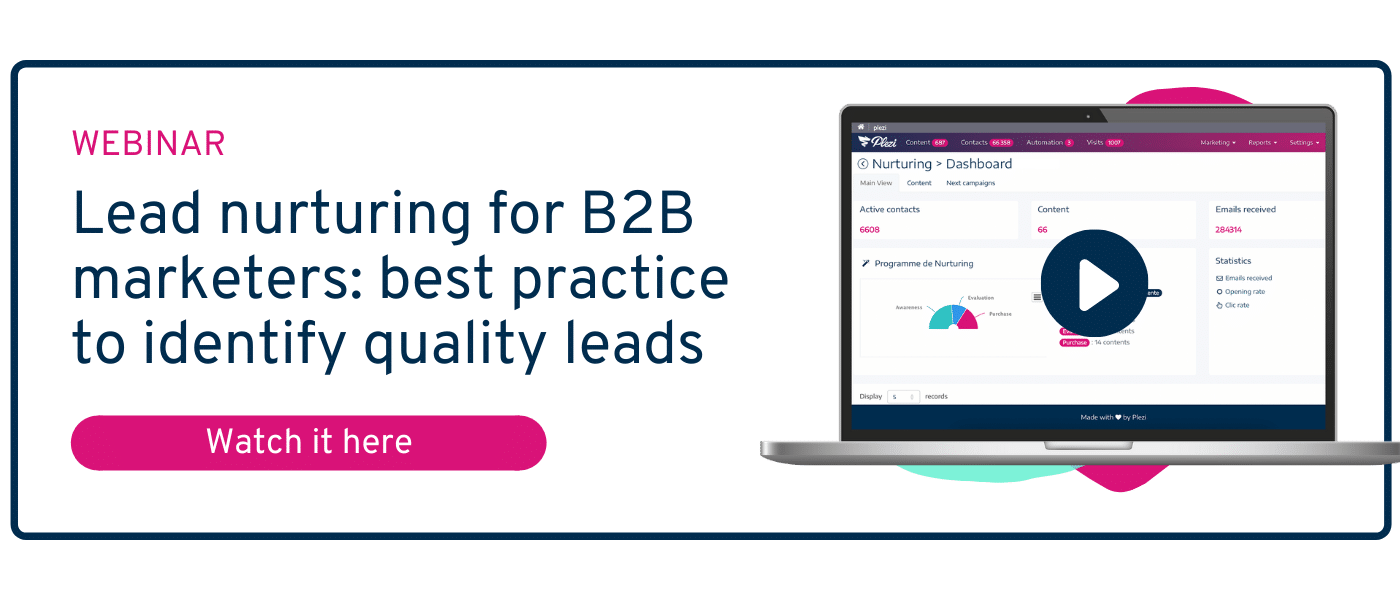Many marketers believe that it isn’t possible to generate and create new leads without having a mountain of content to hand. For those who are already overwhelmed by everyday tasks, creating content can be an additional burden for marketers who are flat-out, but would like to set up a content strategy nevertheless.
Well, here’s the good news. This idea is totally wrong!! What’s more, you probably have more than you realised to get started. You have much more content than you think and you just have to adopt best practice to capitalise on what already exists and gradually create quality content to create new sales business.
Are you tempted? In this article, we have prepared a short guide for you. Before we begin, however, let’s go over the basics. First of all, what is lead nurturing? It’s a marketing technique that aims to create a relationship with a prospect by offering them relevant content through different points of contact in order to guide their journey to purchase.
Whatever the circumstances – you can maintain a real connection with your prospects and continue to bring them value.
1. Breaking news: you do have content!
1.1 Content is not necessarily what you think it is
“Content” isn’t necessarily an article or a written piece in the strict sense. A real content strategy takes into account that words are not the be-all-and-end-all. Widen your definition of what you think a content strategy is so you can reach out to your target customers – whether it is with words or not.
Start to think about it and you’ll realise you have more content than you thought – a sales brochure, webinars, your pricing page, your get in touch page, doing trade shows – no matter what the format is, as long as it brings value to your prospects.
1.2 Reuse your current content
Content is not simply content. You can reuse it to repeat your message through different channels. And as a bonus – you’ll save a lot of time! When you feel you are running out of time, you can easily recycle past content to change the medium.
For example:
- create a white paper out of several articles;
- offer a replay video of a demo, with a landing page and short presentation.
- write an article (or a video) about one of your appearances at a show;
- turn your article or white paper into an infographic.
The possibilities are endless. If you’ve invested time and resources into creating content: it will be repaid by helping you to create new content.
You will also find that some content has been created internally – but it is normally for your customers, salespeople or employees. Why not reuse them as content for your prospects? Technical documents, benchmarks… can all be useful, once modified.
1.3 Create smart content
The best way to get started creating content is… simply to start creating content. When you an idea for something, ask yourself the following:
- has this content already been done – or redone?
- will this content really answer the needs of my prospects?
- is this content in line with my persona?
- is the format appropriate for the message I want to convey?
In fact, what is most important is to create content that has high value. If you’re committing your scarce resources to produce the maximum result, you need to think carefully about the nature of your content. Don’t duplicate the content you see everywhere online: it will be invisible, your prospects will learn nothing new and you will have wasted your team’s precious time. Think differently!
By knowing your personas well, you’ll be able to understand what answers they are looking for and how. Make Google queries to see what content has already been produced, change formats … For example, rather than yet another “how to” article, why not make a kit with an explanatory video?
Our persona kit, created by Benoit, our Growth marketer, has generated over 4000 downloads and 2500 leads.
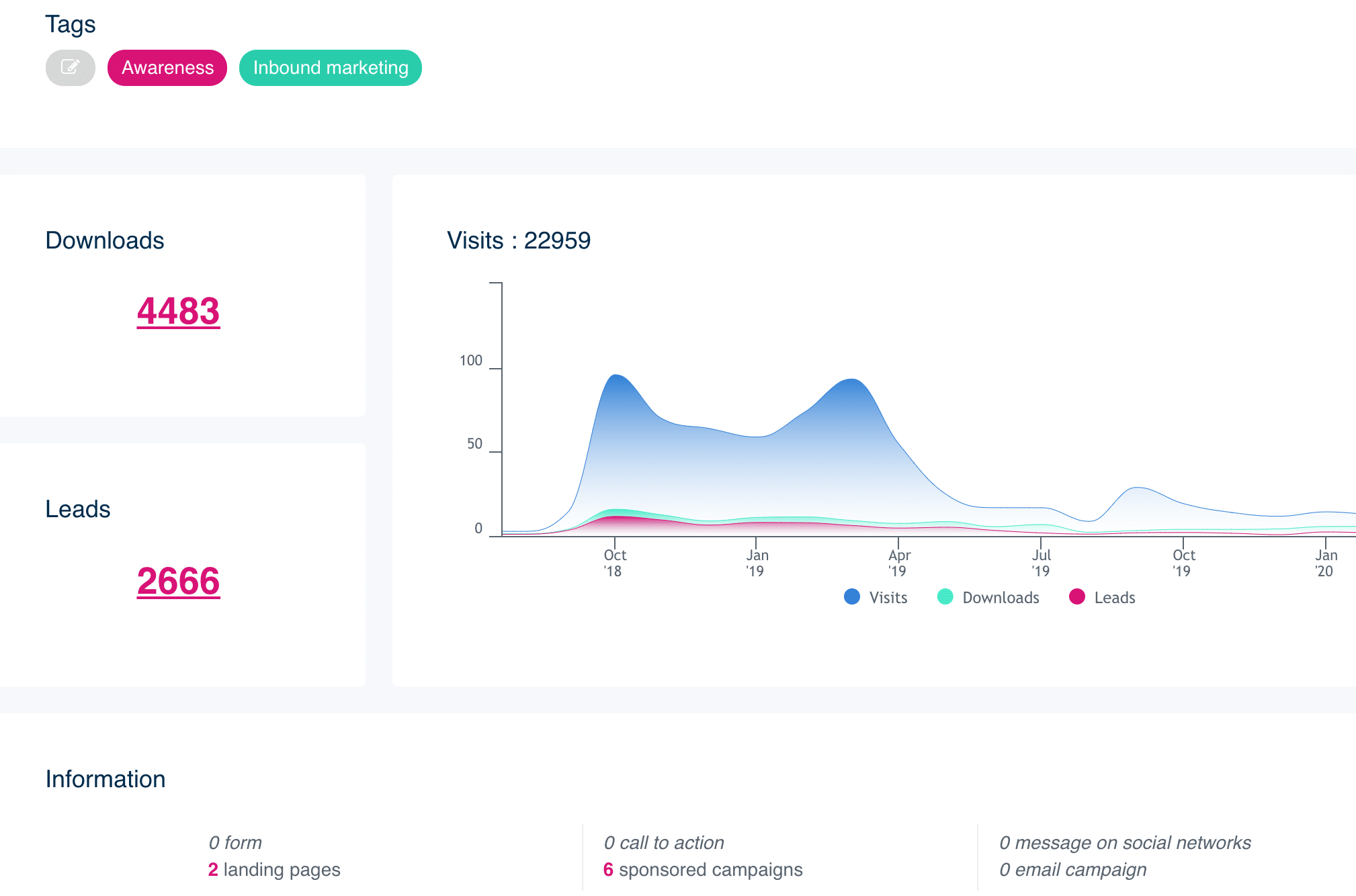
The advice of Benoit, our Growth Marketer
“To make content that’s smart, you need to have two reflexes – Everything that is unclear or complicated is an opportunity, because your prospects will be looking for simple answers to more complicated concepts. Your role as a marketer is to unravel this ball and simplify this content as much as possible to offer qualitative and useful answers to your prospects.
-Go beyond your sector. By looking elsewhere you can distinguish yourself from your competitors.”
2. Put your lead nurturing in place slowly
The key to content strategy is to keep being innovative. The smaller your starting capital, the easier it is to adjust it and change your approach if necessary.
2.1 Begin with your newsletter
A newsletter is the best way to create. relationship with your leads. What’s more, it’s going to force you to maintain a certain production rate.
If you publish 2 blog articles per month and have some news to share, you can start a newsletter! Your prospects won’t have time to get lost in an over-supplied newsletter, so as always, don’t try to do too much. If your content is well thought out, the work will (almost) do itself.
At Plezi, we launched our newsletter to start creating that bond and to start a conversation with our prospects. Initially, it was 100% automated to save time and ease the team, now, we look at, but also let automation do the rest when our content production became more sustained and we had more human resources to devote to it.
It means you will be able to keep people engaged, update and be able to share news about who you are, your values, your product and your brand. It’s an effective marketing strategy and can be done quickly.
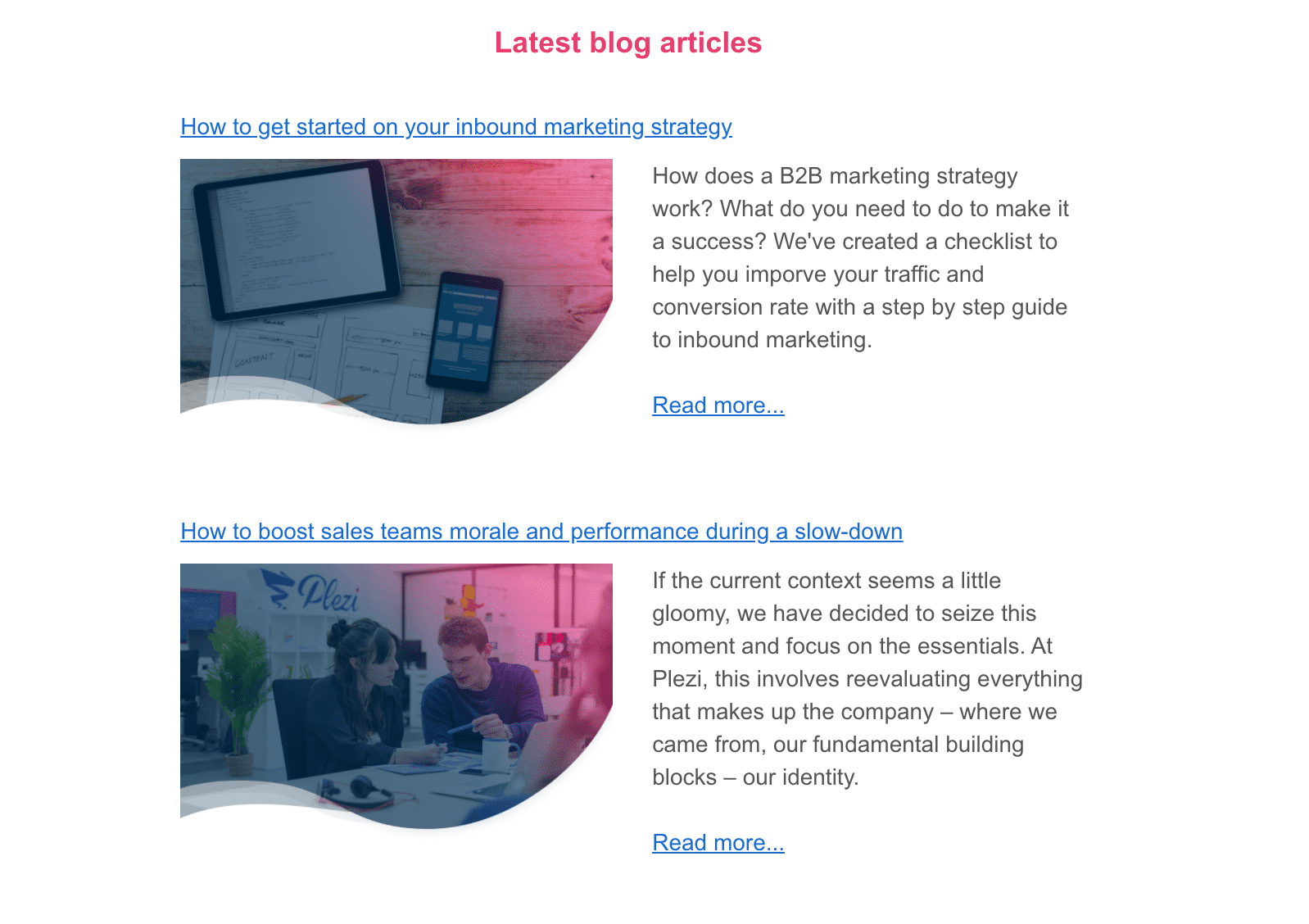
2.2 Automise some key moments with work-flows
For specific goals that you have in mind, workflows can prove useful and help you to fuel your contacts with very little content. For example, to manage the prospects gathered from a trade show or webinar, you can set up a simple workflow with two or three pieces of content encouraging your prospects to go and consume new information.
For example, after a trade show on Growth Hacking last year, we set up a workflow with only two pieces of content:
- an article on the marketing flywheel, a subject that was mentioned during the conference.
- a webinar with different pragmatic advise and tips to help improve an inbound marketing strategy.
Thanks to this email, we have kept the link with our new prospects by nurturing them with relevant content.
You can also, for example, create a workflow offering a call or a demo to people who have downloaded one of your sales brochures.
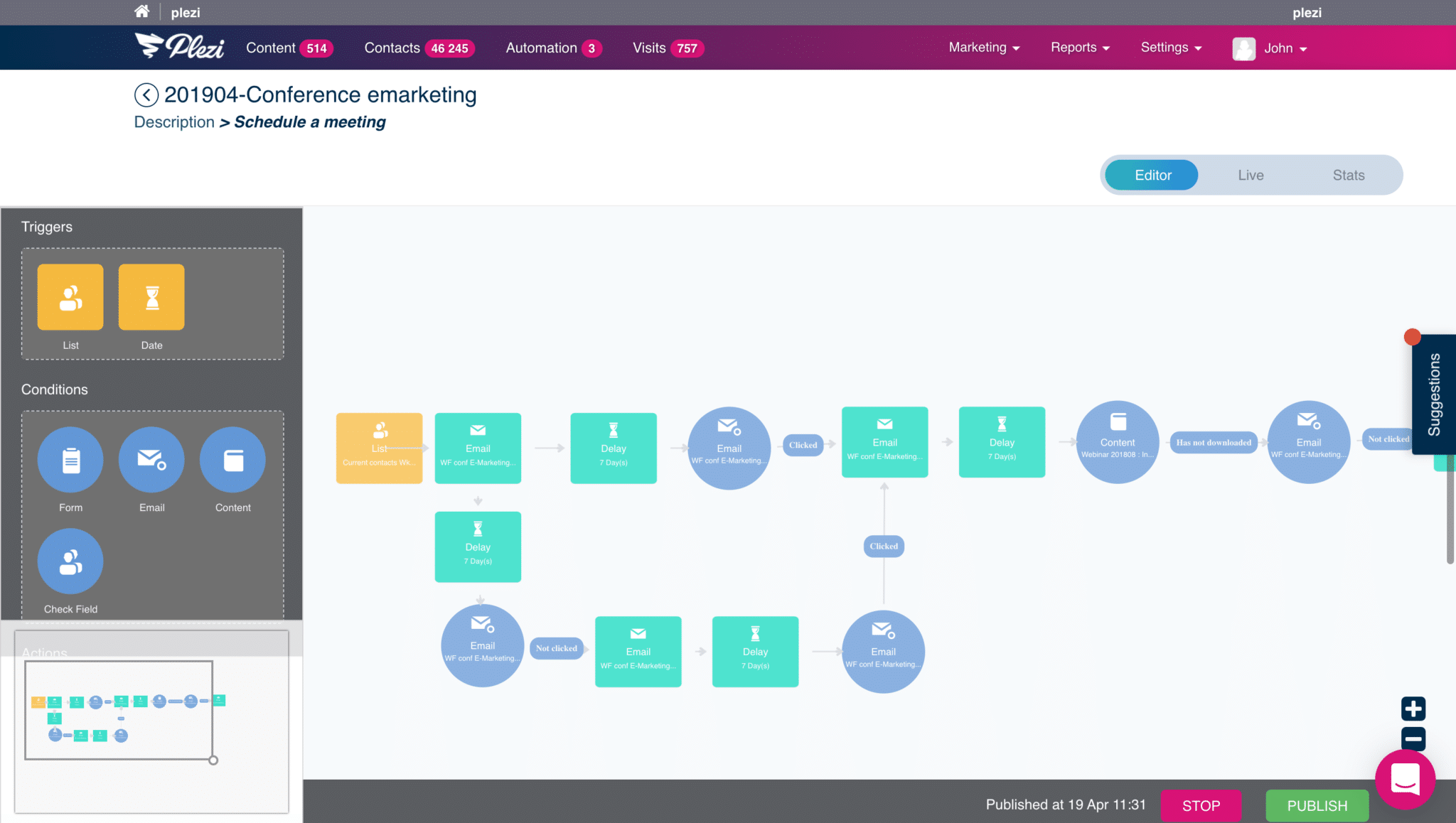
The downside of workflows is that they can take time. Try to use them for specific occasions, so you don’t give yourself a sore head!!
2.3 Speak to your contacts throughout the buyer’s journey with personalised content thanks to our smart campaigns
The last stage in informing your prospects (and the most efficient) is to be able to give them content that is relevant at each stage of the funnel.
This is another way to reuse your content to create a content marketing strategy that helps to educate and inspire your audience.
If you put in place a smart campaign you will be able to feed them with content that is suitable for each stage of their decision making.
This function on Plezi’s software means that any content you put online can be given criteria on Plezi (stage in the sales cycle, subject, type of person etc) using a system of tags. Plezi then cross-checks this with the data of your prospects collected so far: their maturity on your site, articles already consulted, online activity, etc. Once this crossover has been made, the smart campaign selects the relevant content to send to each of your prospects.
What it means, is you can do away with complicated workflows and have relevant content going to the right person at the right time, based on your prospect’s interest. Meaning you can truly automate your content, while staying personalised.
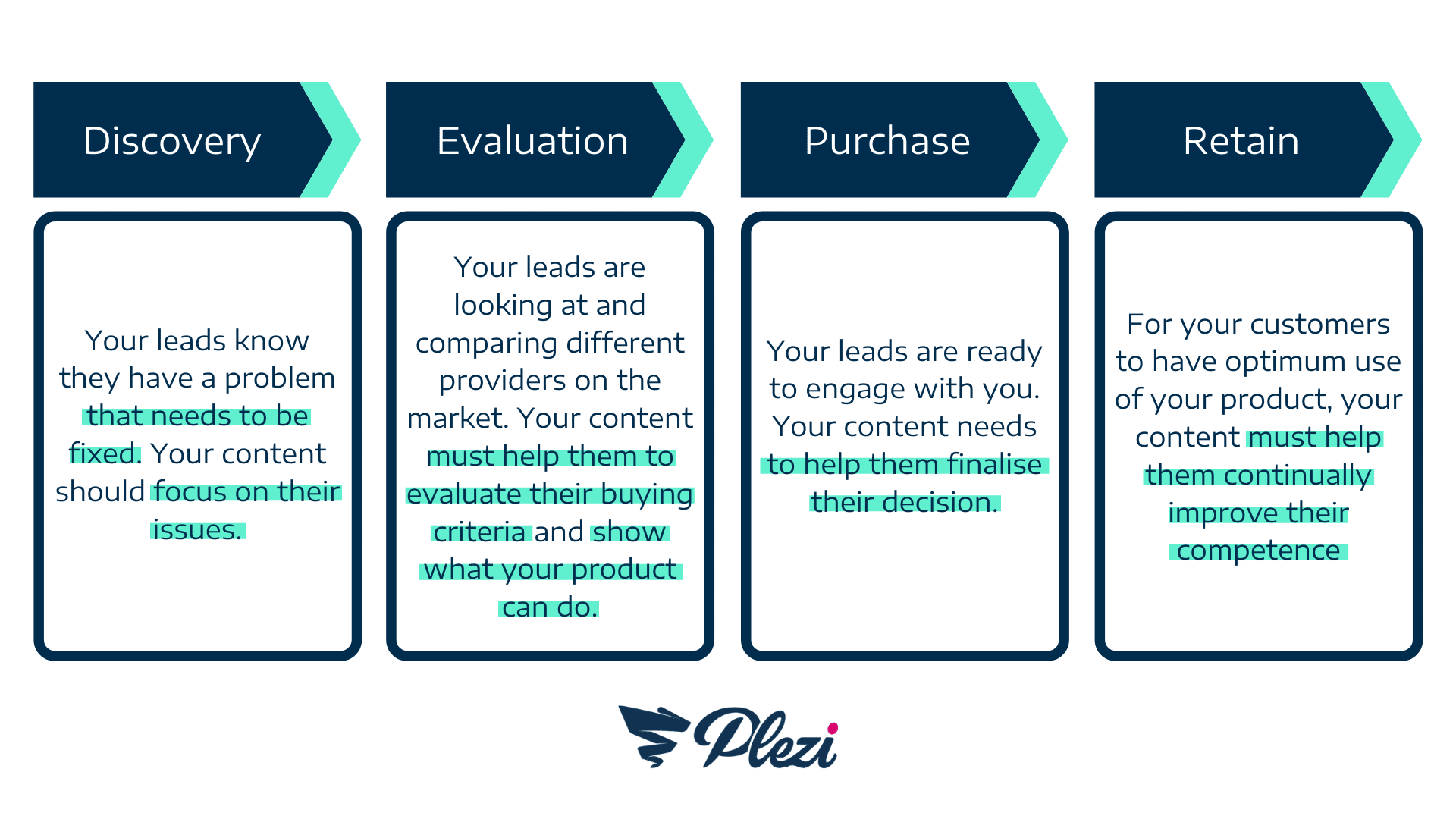
The smart campaign will feed on this content, bit by bit, and will also help you to become aware of what you’re missing, so you can adjust and add as you need.
At Plezi, we started with 3 items of content per phase of the purchasing cycle to start our smart campaigns. We added to this as our content production became more essential.
Adeline’s advice, our marketing manager
“The key is to focus on one persona at a time. Start off with a persona you know well, then set yourself the target of content creation such as: 3 articles + 1 downloadable content per phase. From this base, you can enrich your editorial calendar with new ideas”.
By keeping in mind your future customer’s needs and problems, you can create content that addresses it, you can then determine the other content that is suited to the phase you are working on. For example:
- discovery: a brochure
- evaluation: a demo request
- buying phase: a practical kit
Then you can keep enriching the campaign with the content you created as you go. But the basics are there, and that’s enough to start some movement.
A good content marketing strategy does not need to be an overwhelming task, but can be added to bit by bit. But beginning with some of the ideas we have listed here, whether it is to email, reuse content for social media or ads. Repurpose content for different means. Or simply keep adding to it as you go will help your brand awareness, bring people to your site and help you start to convert and identify your target audience.
Don’t underestimate your ability to create a real marketing strategy based on small, realistic content ideas. The more content you produce that is relevant, educational and of high quality, the easier it will be for you to transform leads into customers, and to test and change as you go. If you’re tempted to get started and want to be really organised, download our Editorial Planning kit to help you out.






